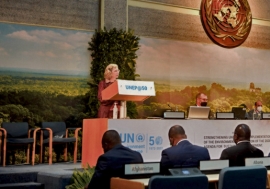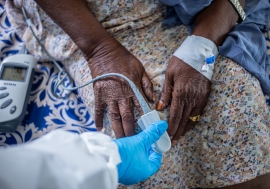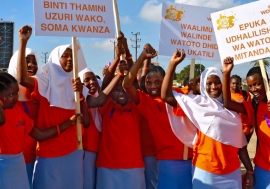In Africa, there are no sidewalks in more than 65 per cent of the road network - forcing pedestrians and cyclists to commute in unsafe and unpredictable conditions. The lack of consistent and reliable infrastructure for these people, who often represent the poorest and most vulnerable, contributes to exacerbating inequalities and unacceptably high road fatalities.
Unfortunately, as is common in some cities around the world, the priorities on the street do not serve the needs of the majority.
In Zambia for instance, pedestrians accounted for 60 per cent of the total deaths in road traffic accidents in 2016. These numbers are jarring since in the capital Lusaka, only 10 per cent of people use private vehicles, while 65 per cent walk and 24 per cent use public transport.
In the past, efforts have been made to construct walkways and cycle lanes to ensure safe and separate mobility, however, these initiatives remain largely uncoordinated and have left a major part of the road network without either of the facilities. Pedestrians are relegated to the margins of uneven and dusty roads compromising both their safety and their livelihoods.
“Sometimes when you want to cross the road, there is no one to help,” says umbrella salesman Jack Mwamba. He has to navigate the streets of the city in a wheelchair.
Mr. Mwamba and others interviewed as part of the Pedestrian First project led by the United Nations Development Programme (UNDP) and the Ministry of Local Government, feel that the government should ensure that there is safe passage for people on the streets of the city.
However, there is some hope for Mr. Mwamba and the 23.6 million other Zambians expected to live in cities by 2030.
Rapid population growth has not only offered opportunities for usable research but has also posed important and urgent transport planning questions. This is because increasing population sizes tend to be associated with increasing traffic congestion.
Congestion is a major impediment to economic growth, competitiveness, and poverty alleviation, while vehicle pollution from increasing motorization also contributes to respiratory ailments and climate change.
Improved roads infrastructure and the investment in making Lusaka a livable city would have benefits across the Sustainable Development Goals, from Goal 3 (Good Health and Wellbeing) , to Goal 8 (Decent Work and Economic Growth), to Goal 11 ( Sustainable Cities) and Goal 13 ( Climate Action).
It is a critical moment for cities like Lusaka that are growing rapidly. The Government of Zambia is working on strategies to overcome transport planning challenges. The ongoing Lusaka Decongestion Project, for example, offers a glimpse of how urban mobility might look in the country’s near future.
The $289 million initiative is jointly funded by Exim Bank of India and the Zambian government. It aims to improve existing streets and widen up to 65.64 kilometers (km) of road, creating bi-directional bus lanes for better traffic management facilities and enhancing some key junctions by constructing 25.68 km of flyovers.
However, as civil society stakeholders such as the Zambia Road Safety Trust have pointed out, there is a need to plan for pedestrians and cyclists in the core components of the Plan to create an integrated transport network.
A major benefit from this project is the creation of jobs along with the capacity building of local contractors, with 20 per cent of contracts being awarded to Zambian companies.

Putting Pedestrians First
New projects and events indicate a shift in priorities - towards safe and affordable modes of transport, especially for vulnerable road users.
The recently launched Zambia Non-Motorized Transport Strategy includes a comprehensive action plan to ensure that “Zambian cities and towns will provide safe, efficient, and accessible walking and cycling networks to improve mobility for all residents, enhance access to opportunities, and promote equitable allocation of street space.”
It contains a variety of activities, including the development of 40 km of complete pedestrian facilities and 20 km of cycle tracks per year across 10 key cities and towns.
The Zambia Pedestrian First Project (also known as The Zambia 10 km Project) and the “Investing in Walking and Cycling in African Cities” project initiated by the UN Environment Programme’s (UNEP) Share the Road initiative, are supporting the implementation of the strategy.
The projects aim to ensure safe walking and cycling infrastructure developed with an emphasis on leaving no one behind - including wheelchair users and other persons with disabilities. This is because systematic, genuine and realistic investments in people that walk and cycle will have holistic payoffs on development that go beyond the direct benefits of improved transport systems and mobility.
These projects aim to ensure that pedestrians and persons living with disabilities can safely navigate their city and that their increased accessibility will also be a catalyst for converting Lusaka into a more livable and resilient city.
Safe walking and cycling infrastructure that is integrated into development projects will not only decrease the high personal and economic cost of transport for disadvantaged communities but will also improve people’s health and have positive impacts on economic productivity.
It is not simply about adding a sidewalk to a street but rather, providing the services necessary for people to reach their places of work, learning and empowerment.
















